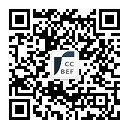主题:Does correlation really matter in risk taking? An experimental investigation
主讲人:郑家昆(人民大学)
时间:2021年05月10日(星期一)20:00-21:30
主讲内容:
预期效用理论的两个突出的替代理论,即后悔理论和显著性理论。依赖于这样的假设:当决策者在两个彩票之间进行选择时,不仅是彩票的边际分布,而且不同状态下报酬的相关性也会影响风险承担。最近关于显著性理论的实验研究似乎提供了支持这种相关性效应的证据。然而,这些研究未能控制事件分化效应(ESE)。在本文的第一部分,我们试图在两个环境中分离出相关性和事件分割的作用。1.Bruhin等人(2018)以及Frydman和Mormann(2018)研究的共同后果Allais悖论;2.Dertwinkel-Kalt和Koster(2019)研究的Mao对之间的选择。在这两种情况下,我们发现有证据表明,最近支持相关效应的发现主要是由ESE驱动的。一旦控制了ESE,我们没有发现相关效应的一致证据。在本文的第二部分,我们将对相关效应的调查扩展到之前未考虑的环境。我们首先在一个新的任务中测试相关效应,该任务允许检测相关效应,即使它们只是二阶重要性。在这种情况下,我们发现一个精确估计的空效应。最后,我们证明,当改变相关结构意味着从状态支配到FOSD的改变时,这会导致次优选择的数量增加。观察到的选择模式与显著性和后悔理论相矛盾。因此,我们的结果使人们对这些理论产生了怀疑,但也提供了在某些情况下存在相关效应的证据。
Two prominent alternatives to expected utility theory, regret theory and salience theory, rely on the assumption that when a decision maker chooses between two lotteries, not only the marginal distribution of the lotteries, but also the correlation of payoffs across states impacts risk taking. Recent experimental studies on salience theory seem to provide evidence in favor of such correlation effects. However, these studies fail to control for events-splitting effects (ESE). In the first part of this paper, we seek to disentangle the role of correlation and event-splitting in two settings: 1) the common consequence Allais paradox as studied by Bruhin et al. (2018), and Frydman and Mormann (2018); 2) choices between Mao pairs as studied by Dertwinkel-Kalt and Koster (2019). In both settings, we find evidence suggesting that recent findings supporting correlation effects are largely driven by ESE. Once controlling for ESE, we find no consistent evidence for correlation effects. In the second part of the paper, we expand the investigation of correlation effects to previously unconsidered settings. We first test for correlation effects in a novel task that allows to detect correlation effects even when they are of second-order importance only. In this setting, we find a precisely estimated null effect. Finally, we demonstrate that when changing the correlation structure implies a change from state-wise domination to FOSD, this can lead to an increase in the number of suboptimal choices. The observed choice patterns contradict both salience and regret theory. Our results thus shed doubt on these theories but also provide evidence that correlation effects exist in some cases.
